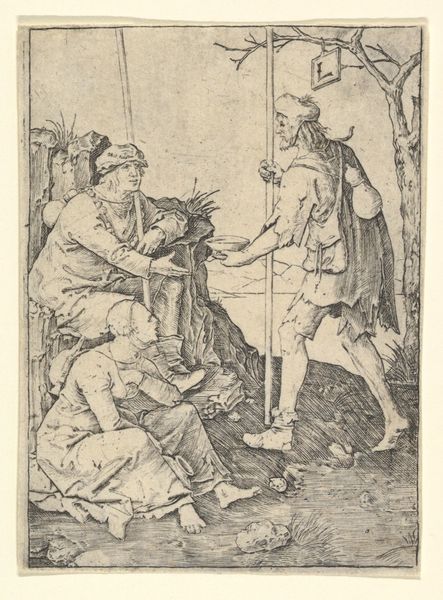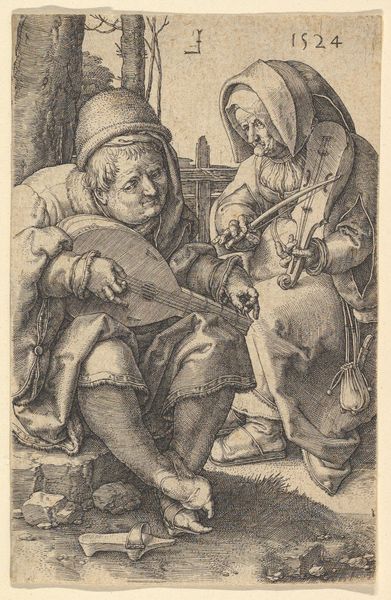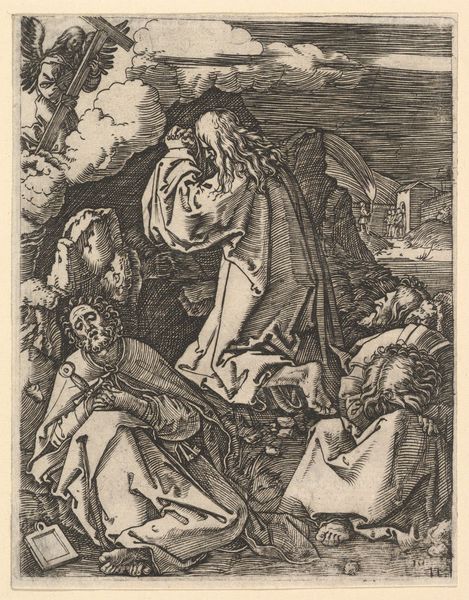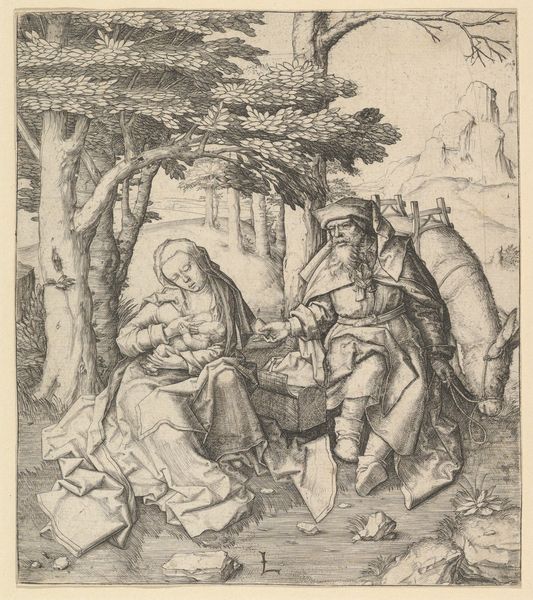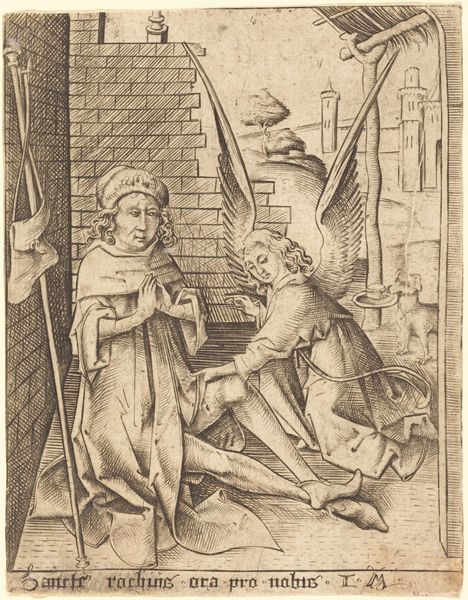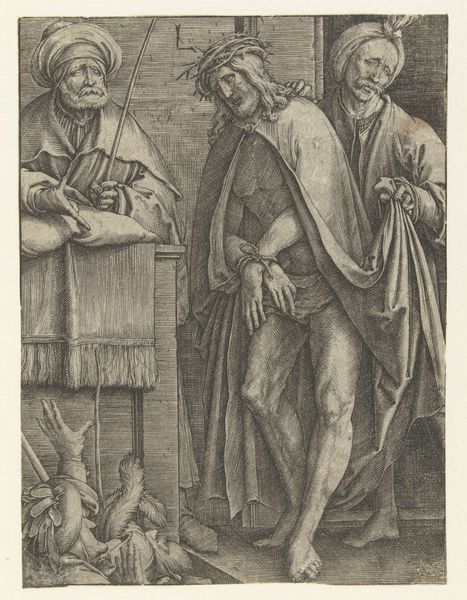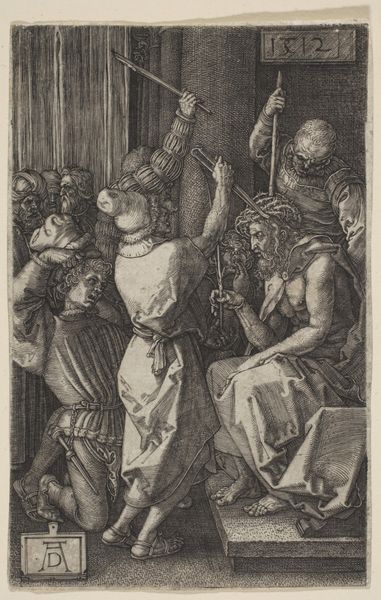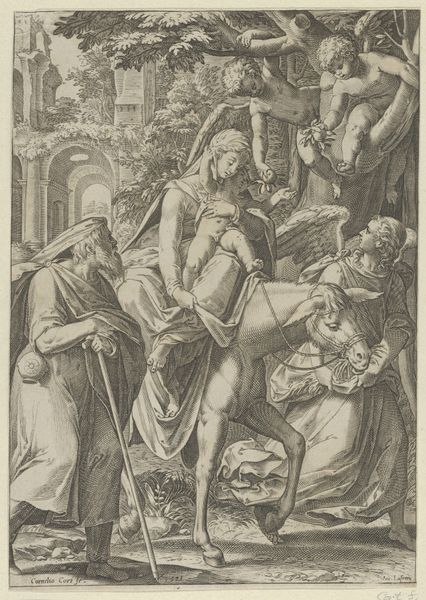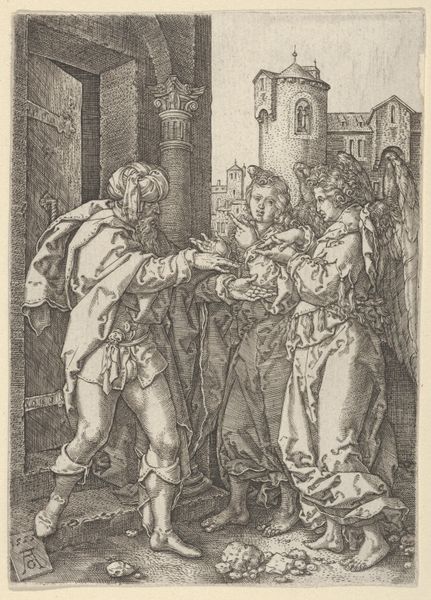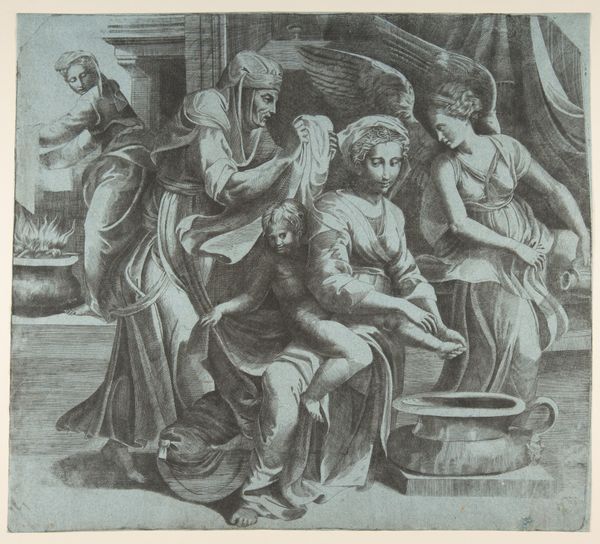
Dimensions: sheet: 4 5/8 x 3 1/8 in. (11.7 x 7.9 cm)
Copyright: Public Domain
Curator: This engraving, dating from around 1610 to 1620, is Jan Muller's "The Entombment, from \"The Passion of Christ,\"" here on display at the Metropolitan Museum of Art. Editor: My first impression is one of subdued grief. The stark black and white amplifies the heaviness of the scene. Look at the angularity of the tomb itself—a brutal contrast to the flowing garments. Curator: The choice of depicting the Entombment is laden with significance. It's not just a depiction of death, but a ritual of closure, marking the transition from public agony to a sacred, private grief. Editor: Notice how Muller uses dense, intricate cross-hatching to create a sense of depth and texture. The bodies appear weighty, solid. But consider, too, the Mannerist elongation of Christ's body—almost an ethereal quality that challenges the otherwise grounded physicality. Curator: That elongation evokes the earlier Italian Renaissance traditions Muller studied, yet imbued with the drama characteristic of the period’s northern interpretations of such events. It underscores a detachment—Christ departing the physical realm even in death. Editor: The surrounding figures create a study in grief. The formal repetition in their bowed heads and clasped hands almost seems like an attempt to contain, or process, a profound sense of loss. Curator: Indeed, and this is a visual vocabulary understood across centuries. The downcast eyes, the support given to the Madonna figure... these gestures speak to a shared cultural understanding of bereavement and resilience. It is in this recognition we can see how a single image encodes an emotional event, which remains deeply influential. Editor: Even now, viewing the piece—the visual rigor is incredibly potent, capturing both the somber occasion and broader Renaissance ideals. It invites contemplation. Curator: Precisely—Muller, through the act of depicting and re-depicting biblical lore, reveals history and, even, the continued psychological and emotional effect it holds for all people of all eras.
Comments
No comments
Be the first to comment and join the conversation on the ultimate creative platform.

